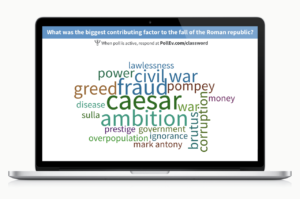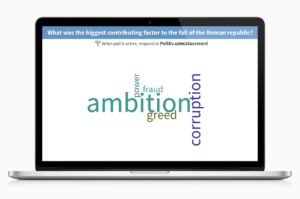10 education word cloud activities that get students talking

Word clouds are a fun visualization of brainstorming sessions or student opinions but word clouds can be more than static images you prepare ahead of class. They can be dynamic, dancing pictures whose words capture students’ ideas and emotions live, in the moment. Word clouds are one of many active learning strategies that teachers can implement to engage visual learners. With Poll Everywhere’s word cloud, words move and grow as students respond live. Popular words get bigger and the colors change.
Some of the examples below come from the many teachers and educators who share their education word cloud activities on Twitter. Join the conversation by posting your own word clouds and tagging @PollEverywhere on Twitter.
You can also click to copy any of these word cloud activities to your Poll Everywhere account. Don’t have an account? Sign up for free today.
1. Icebreakers kickstart student engagement
The first week of class is a great time to dive in with an icebreaker question. Make the question as meaningful or nonsensical as you like – just phrase it in such a way that it solicits a one-word response. One-word responses are easier to read in the finished word cloud. Words that students submit multiple times grow larger than the rest and showcase the most popular responses.
Click to copy to your account
- What is your North Star? (via @TonyAPLC)
- What’s your #lifehack of the week?
- What’s the best show on Netflix right now?
- What’s your favorite weekend activity (one word)?
- I loved my summer vacation because I spent it doing… (via @dailystem)
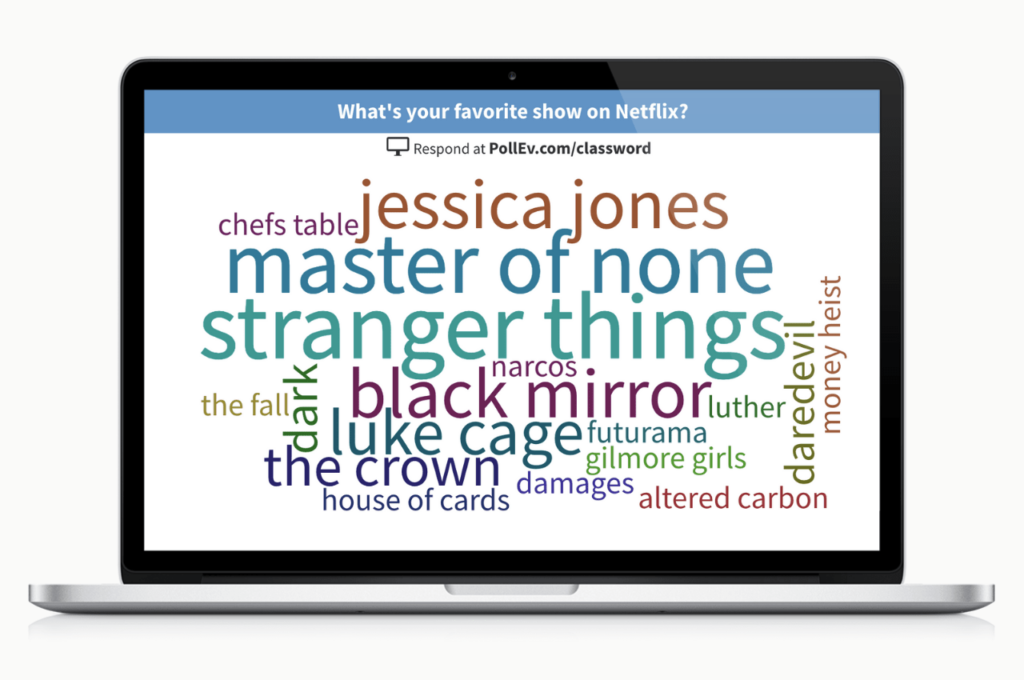
Read more: Fun icebreaker questions to bond with your students
2. Encourage sincerity to form new connections
Help students connect with each other over questions that bring up shared experiences, opinions, and emotions. Seeing how their peers respond gives students a chance to relate to one another in class.
Click to copy to your account
- Who has had the most impact on your life?
- What’s your biggest goal for the year, in one word?
- What words would you like others to use when describing you?
- What is your WHY for attending this session today? (via @EdTech_Beard)
- What character trait do you look for in a new friend?
Use the responses as a jumping-off point to talk about the things that make students unique, and also completely normal. Invite students to elaborate on their responses. After sharing something personal in the anonymity of the word cloud, students often feel empowered to discuss personal topics out loud. You can also double down on anonymity by enabling anonymous responding for these activities.

3. Help students reach a consensus as a group
This is an education word cloud activity that can last the entire class period.
Open with a broad topic, perhaps: “What was the biggest contributing factor to the fall of the Roman republic?” Students post their one-word hypotheses in the word cloud. Everyone then takes a moment to read through the results and reflect on what was said.
Next, break your students into small groups. These groups research the topic of your word cloud. Meanwhile, you either clear the activity, or create a new one asking the same question. When students finish with research, ask them to submit a new response to your word cloud. Then compare and contrast the new and old results.
You can also ask students to defend their responses aloud. If any student changes their mind during this discussion, they can use the change response button in Poll Everywhere to update their response. It’s very satisfying to see a word cloud full of disparate responses reform around a few main ideas as the result of a lively debate.
Read more: The 9 best word cloud generators
4. Summarize topics to develop understanding
Challenge students to show understanding of a complex topic by summarizing it into a single word. This is an easy way to gauge familiarity with, or opinion of, a new topic. It can also be used for formative assessment as a way to reflect on the previous lecture. And because all students respond at once, you can hear from the entire room in the time it would take a few to respond aloud.
Click to copy to your account
- What’s one word that you associate with religion? (via @JeffGuhin)
- For most people, what is the number one symbol of a changing climate? (via @KHayhoe)
- What’s the most important word in the US Constitution?
- In one word, what did industrialization mean for Europe?
- What words or phrases does the word “environment” call to mind? (via @mcsardo)
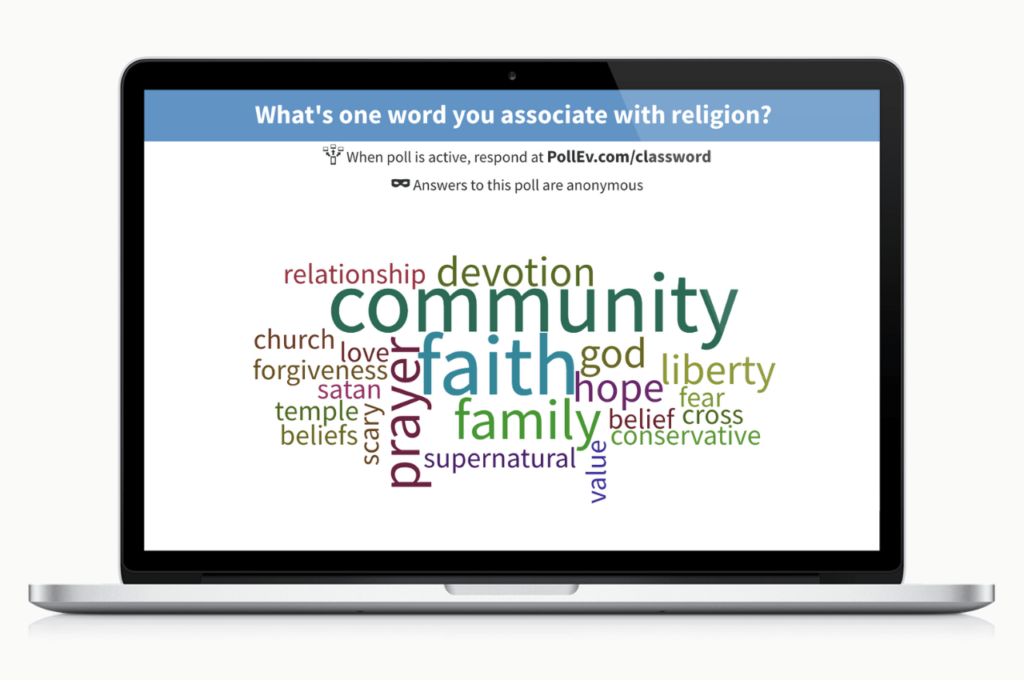
5. Build empathy by checking emotional wellness
Check in with students and learn how they are coping with the stresses of school, friends, family, and life in general. Many educators find that emotional checkups such as this help them elicit trust from students, promote empathy in the classroom, and steer class time in a more positive direction. You don’t need to solve everyone’s problems right then and there. Sometimes it’s enough just to be reminded that we all carry these feelings inside us.
Click to copy to your account
- What’s your top stress factor right now?
- How do you feel about next week’s final?
- In a word, what do you need most today?
- What’s your one-word reaction to the semester so far?
- What is your favorite activity to relieve stress?
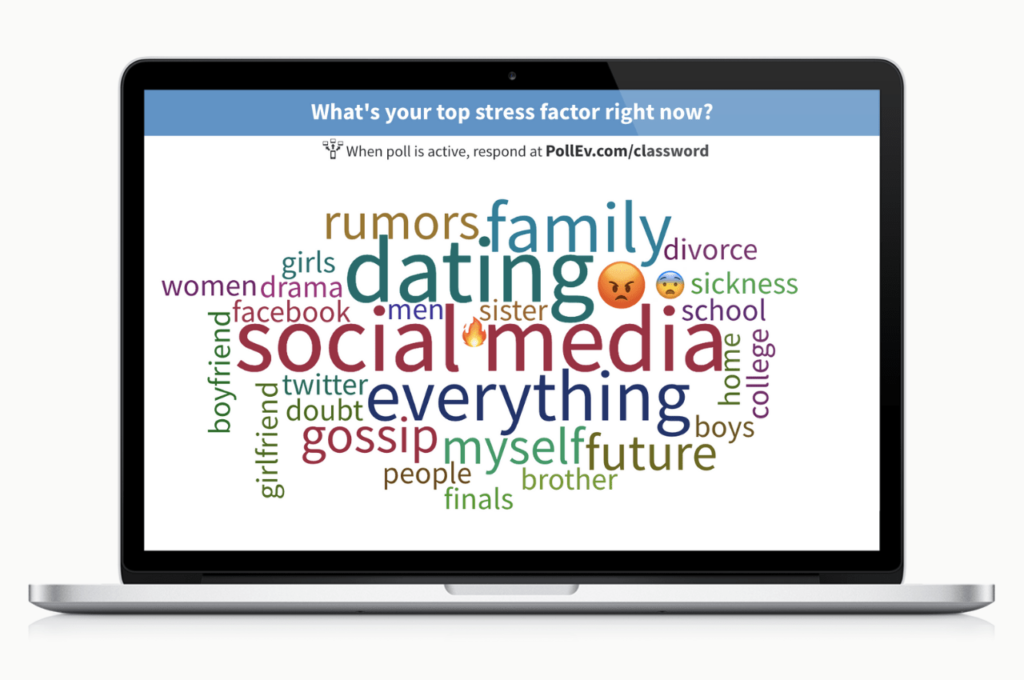
6. Quickly visualize brainstorming feedback
Live word clouds are an excellent scratch pad for brainstorming solutions with an entire class. Use this activity to kick off a new unit, or help students find a new approach to an old problem. Give students the ability to respond multiple times and encourage them to participate throughout the discussion. You can also choose to hide responses to any word cloud activity and only reveal them once everyone has finished. That way, students are not influenced by their peers’ responses.
Click to copy to your account
- What are some causes for cyberbullying? (submit three)
- What’s the best way to prevent heart disease?
- How can you make your study time more effective?
- What three words come to mind when you think of digital citizenship? (via @MrLands)
- What are some ways in which students can be politically active?
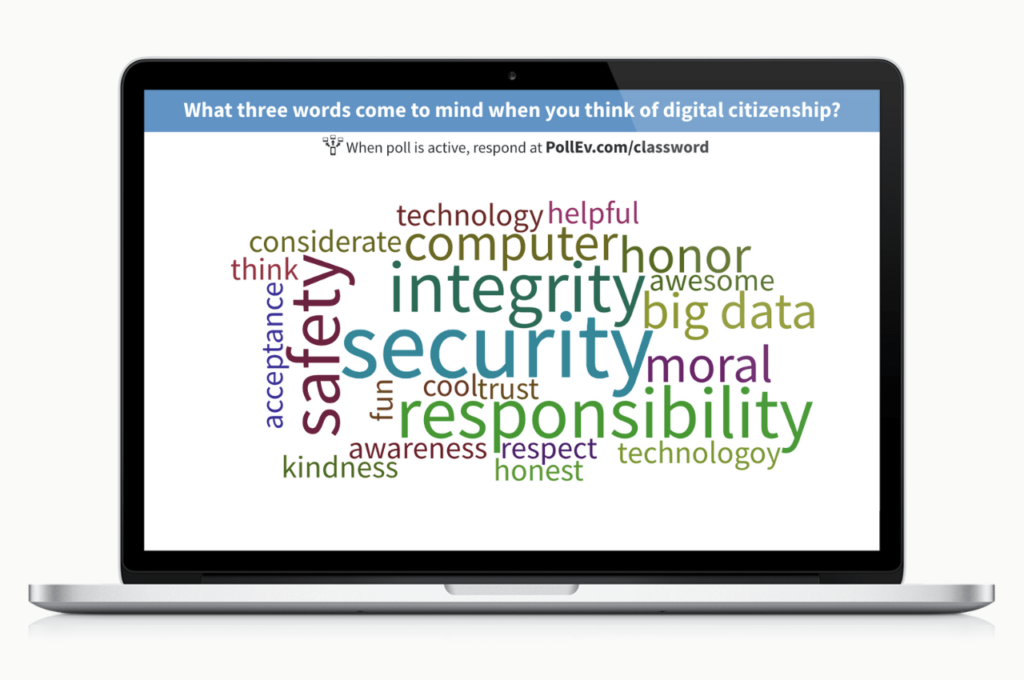
Read more: Make PowerPoint games the audience plays on their phones
7. Ease into deep discussions for genuine responses
There’s a phenomenon you will discover if you regularly use live polling in the classroom.
It’s called “snowballing vulnerability.” The Poll Everywhere presenter who coined the term conducts ground-breaking workshops that train students and employees to have effective conversations about conflict-laden topics, such as global warming and LGBTQ issues.
Here’s how it works: Kick off your conversation with a word cloud asking students how they felt about a past failure. When students see others responding honestly about failure, they tend to embrace the anonymity of the word cloud and speak out voluntarily. It’s a powerful moment.
The next time you’re anticipating a difficult discussion with your students, open with a word cloud, then move to a longer open-response question, and keep building out from there. Students are more likely to speak openly and honestly when you ease them into these conversations.
Click to copy to your account
- Where have you seen discrimination take place?
- What parts of your life do you tend to hide from others?
- What word best describes your last failed conversation?
- When you hear someone spreading rumors about somehow, how do you feel?
8. Pinpoint a theme to focus class discussion
Bring instant focus to class discussions by asking students to narrow the theme of a chapter, essay, speech, article, book, or poem down to a single word. This is a great way to help students prepare to write their own essays and research papers. It also makes for lively class discussions as students defend their one-word theme submissions.
Click to copy to your account
- What’s one thing you learned from that article? (via @GinaChomic)
- What’s the theme of ‘Letter from Birmingham Jail’ in one word?
- Describe the central theme of last night’s chapter in a single word
- In one word only, what’s the overarching theme of ‘The Sound and the Fury’?
- What are the characters discussing in ‘Hills Like White Elephants’?
Read more: How Slack is creating a more inclusive and engaged classroom
9. Check for gaps in comprehension
Credit for this education word cloud activity goes to @NSmithScholars who uses them to get feedback from her students on what they learned that week. She calls it Flashback Friday, and it gives students a chance to show off what they know, while also signaling information they may have missed and needs additional review.
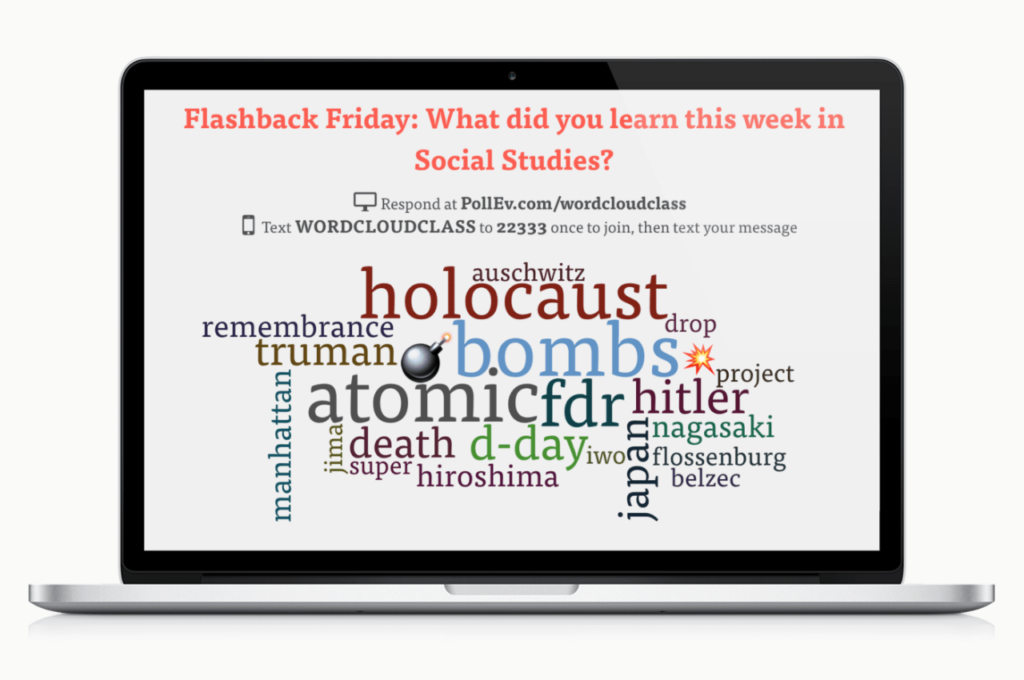
10. Visualize student reactions en-masse
This can elicit a very emotional response in the right circumstances.
Health education teacher Andrew Milne used a live word cloud to wrap up a student-to-student Pride presentation. Students in the audience were able to send one-word reactions to the students on the LGBTQ panel – with great success. It was an empowering moment for those on the panel to see words such as “brave”, “honest”, and “inspiring” grow larger and larger on the screen.
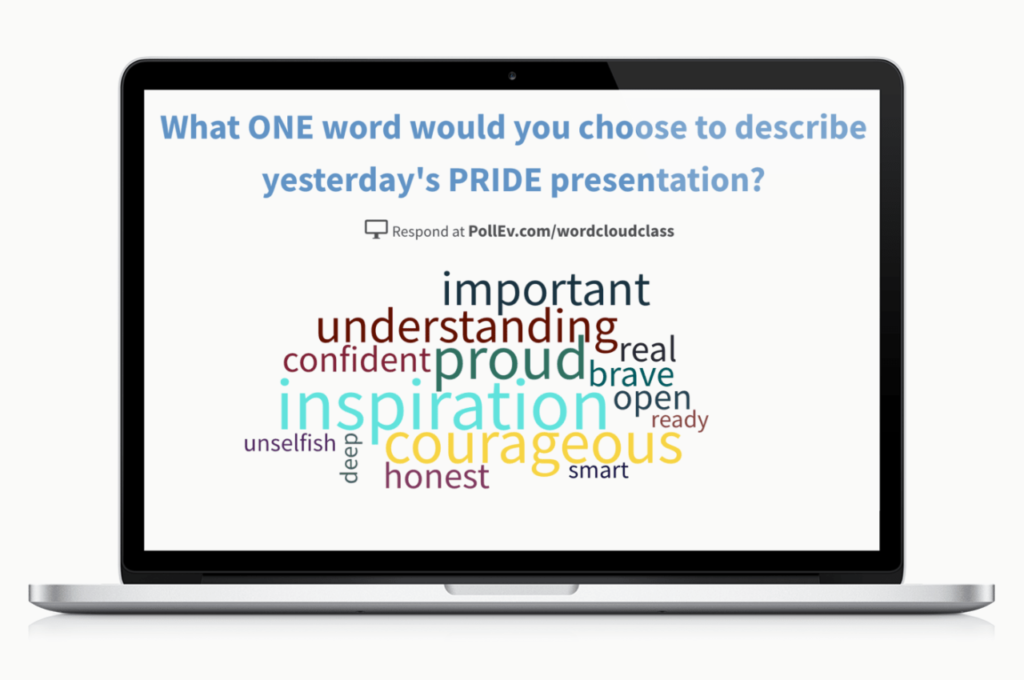
With a live word cloud from Poll Everywhere, you can capture a snapshot of student reactions to almost anything: new concepts, current events, special presentations, and more. Create your first live word cloud activity today.

